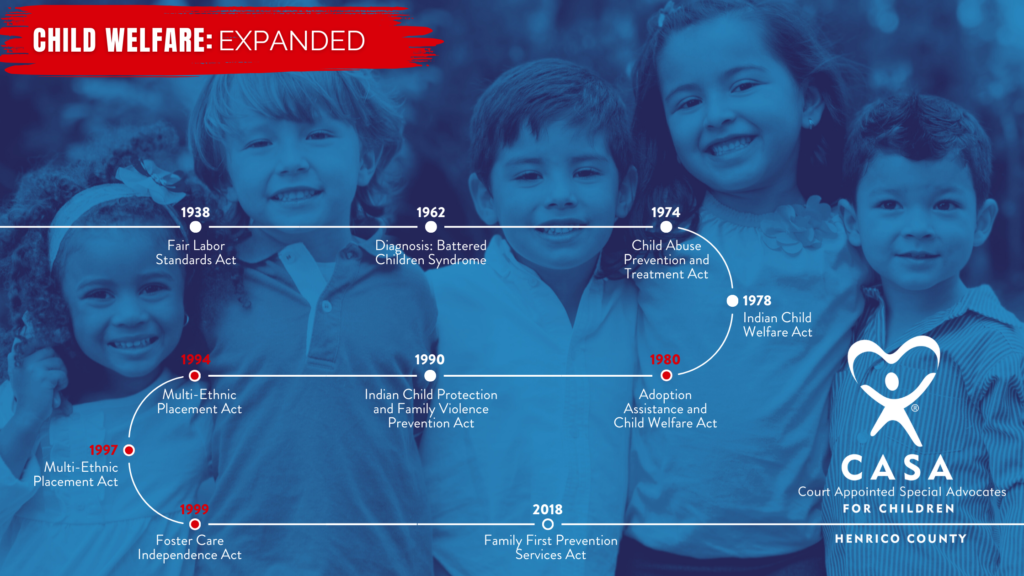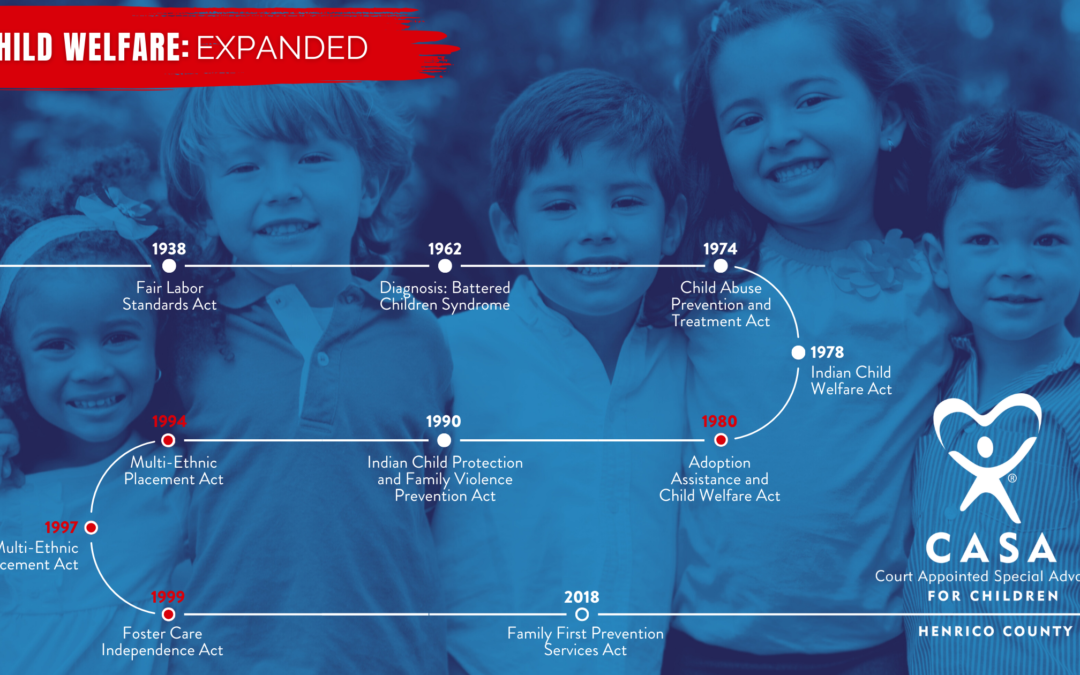
Have you ever wondered how child welfare laws came to be in the United States? It’s a pretty fascinating ride through history, especially when you consider that these laws are relatively new compared to other legal protections we take for granted. In recognition of Child Abuse Prevention Month, our April blog posts highlight some key moments that paved the way for the protections we have today.
Ready to explore more waves of change in the United States’ child welfare policies? Join us as we continue tracing the evolution of laws that shape the lives of our youngest citizens.
1980
The early eighties brought the Adoption Assistance and Child Welfare Act (AACWA) that aimed to improve the outcomes for children in foster care. It prioritized permanency and family preservation. AACWA introduced important reforms, such as requiring states to make reasonable efforts to prevent removal of children from their homes and to reunify families whenever possible. Additionally, it established federal funding for adoption assistance, making it easier for children in foster care to find loving, permanent homes.
1994
Next we encounter the Multi-Ethnic Placement Act (MEPA). Recognizing the importance of preserving cultural connections for children in foster care, MEPA prohibited discrimination in adoption and foster care placements based on race, color, or national origin. This groundbreaking legislation hoped to ensure that all children had equal opportunities for placement and permanency, regardless of their racial or ethnic background.
1997
Then came the Adoption and Safe Families Act (ASFA) of 1997. ASFA set stricter timelines for permanency planning, emphasized the importance of adoption as a permanency option, and incentivized states to expedite the adoption process for children in foster care. ASFA aimed to reduce the time children spent in foster care, prioritizing the need for more stable and permanent homes for vulnerable children.
1999
The Foster Care Independence Act (FCIA) quickly followed. It continued the trend of reforming child welfare policies to better support youth transitioning out of foster care. FCIA provided resources to help older youth in foster care develop independent living skills, pursue education and employment opportunities, and successfully transition to adulthood. By investing in the future of youth aging out of foster care, FCIA aimed to improve outcomes and reduce the risk of homelessness, unemployment, and other challenges faced by former foster youth.
And while at this point we had come a long way, there was still work to be done to ensure every child grows up in a nurturing and secure environment. That is why Court Appointed Special Advocates are necessary! Check back for next week’s conclusion post as we celebrate the ongoing advocacy, legislation, and people working to make a difference in the lives of kids everywhere.








